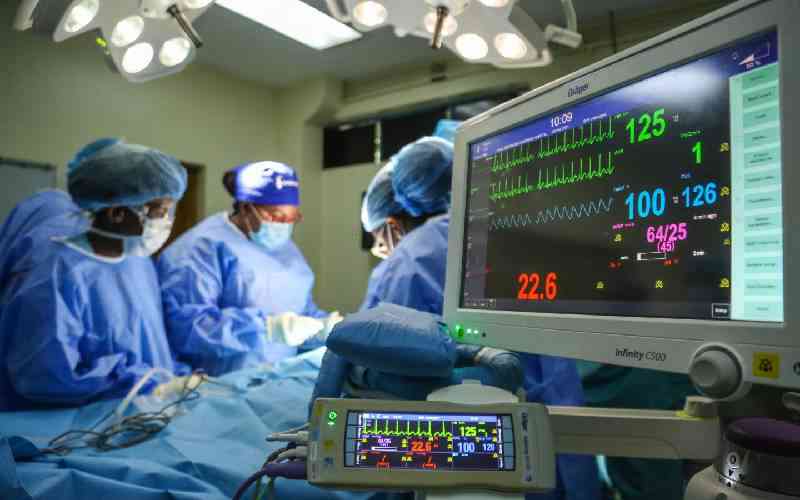Thanks to growing technology in the world of obstetrics, having repeat C- sections is much safer than it used to be, writes DR BRIGID MONDA
It is fact that births by caesarean section or C-section have increased. Many women are opting to have their babies through C-section rather than vaginally, giving rise to the phrase, “ too posh to push”.
One major reason for this trend is that unlike a few decades back, doctors now want mothers to have quality babies, not just live ones or a certain number.
So the medics are more stringent when delivering mothers and intervene more when there are complications.
ITS ORIGIN
The origin of the term “cesarean section” is not clear. The story that the Emperor Julius Caesar was the product of a caesarean birth is thought to be untrue because in ancient times, majority of mothers died after a C-section yet Caesar’s mother, Aurelia, was very much alive after his birth.
A C-section is a major operation and several factors are considered when a doctor decides whether it’s necessary or not. What informs this decision is what is best for the mother and her baby.
The reasons for a doctor recommending one are many though most C-sections are performed as an emergency when complications arise during pregnancy or labour.
A few other reasons for a C-section are previous surgery on the uterus for removal of fibroids, extremely high blood pressure in pregnancy, if the baby is too big to pass through the mother’s pelvis, a twin pregnancy or foetal distress during labour.
Other times it’s done is if the placenta is covering the cervix, blocking the baby’s exit route from the uterus.
It is also done for an HIV positive mother, or one with large genital warts or acute herpes outbreak to reduce the risk of the infected mother passing on these infections to her baby.
C-sections are also done for breech presentation when the baby is coming bottom first because the risk of complications during a vaginal birth is greatly increased because the head and shoulders are the largest parts of the baby.
The safe limit
Once they have stretched the birth canal, the rest of the body, which is smaller, easily follows.
When the smaller bottom end comes out first, the head may get trapped or the umbilical cord can be compressed between the baby’s skull and the mother’s pelvic bones, cutting of its oxygen supply.
Stay informed. Subscribe to our newsletter
A hospital stay after a C-section depends on the reason for it but it’s usually three to four days.
Having repeat caesareans is much safer than it used to be thanks to newer and safer procedures in the world of obstetrics, less risks of infections due to wide spread use of antibiotics and complications from anaesthesia.
Doctors put the safe limit to three C-sections because with repeat operations, there is the risk of uterine rupture.
 The Standard Group Plc is a
multi-media organization with investments in media platforms spanning newspaper
print operations, television, radio broadcasting, digital and online services. The
Standard Group is recognized as a leading multi-media house in Kenya with a key
influence in matters of national and international interest.
The Standard Group Plc is a
multi-media organization with investments in media platforms spanning newspaper
print operations, television, radio broadcasting, digital and online services. The
Standard Group is recognized as a leading multi-media house in Kenya with a key
influence in matters of national and international interest.
 The Standard Group Plc is a
multi-media organization with investments in media platforms spanning newspaper
print operations, television, radio broadcasting, digital and online services. The
Standard Group is recognized as a leading multi-media house in Kenya with a key
influence in matters of national and international interest.
The Standard Group Plc is a
multi-media organization with investments in media platforms spanning newspaper
print operations, television, radio broadcasting, digital and online services. The
Standard Group is recognized as a leading multi-media house in Kenya with a key
influence in matters of national and international interest.






